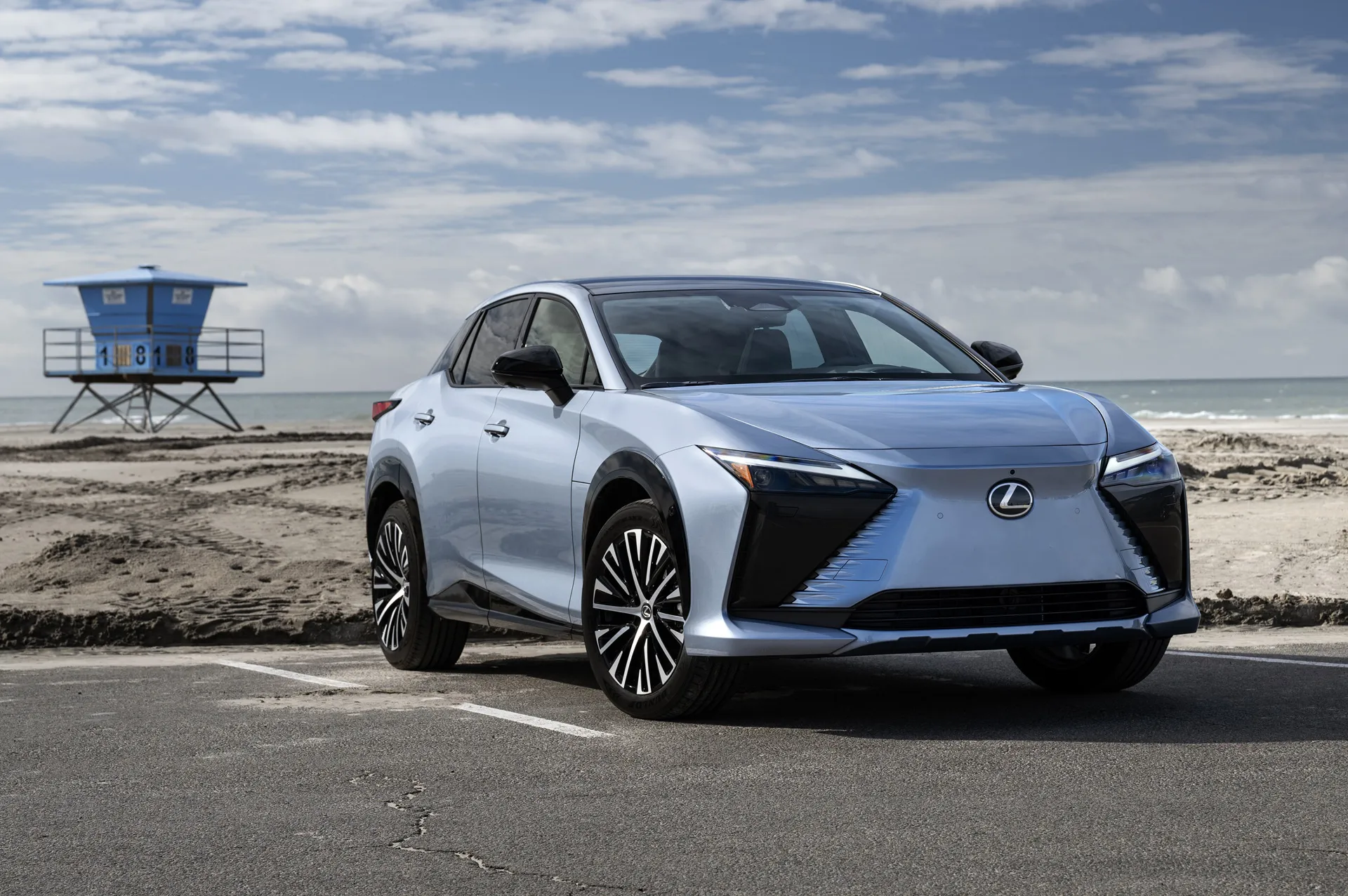The 2024 Lexus RZ comes in a 300e model with a single motor driving the front wheels or the 450e with dual motors and all-wheel drive. They each earn a point for spirited enough acceleration, and the planted handling complements the quiet ride to earn another point. It’s a 7.
New for 2024, the Lexus RZ 300e presents a more affordable and longer range single-motor model into the family. It uses a 72.8-kwh battery pack that feeds the 201-hp front motor for front wheel drive. We haven’t driven it yet, but will update this review when we do.
The 2024 Lexus RZ 450e carries over with dual-motor all-wheel drive. Lexus adopts permanent magnet synchronous motors in either application, and uses the same 150-kw front motor as the 300e, but the 450e adds an 80-kw rear motor. It also swaps in a 71.4-kwh battery pack that enables slightly quicker DC fast-charging times.
How fast is the Lexus RZ?
When it comes to quickness off the line, however, steer toward the 450e. Its dual motors make 308 hp and an estimated 320 lb-ft of torque. It doesn’t leap off the line like other electric crossovers, keeping more in line with a Lexus sedan than a sports car, but it smoothly hustles to 60 mph in 5.0 seconds.
In the 450e, the five drive modes vary the throttle response and torque distribution between the axles, but in most cases the system defaults to a 60:40 front-axle driving bias. Into turns, the bias shifts forward to manage understeer, and out of turns, torque shifts rearwards for better traction and acceleration. The 300e is all front-axle power all the time, and it reaches 60 mph in 7.4 seconds, according to Lexus.
Normal, Eco, Sport, and Custom modes are accessible only through three touches of the touchscreen; a toggle or console switch would be better.
The 450e’s fifth mode, Range, adds a more pronounced efficiency setting than Eco. It turns the throttle to mush, cancels climate control, and relies solely on the rear motor. There’s less power and less traction, but if you overcome your range anxiety, it will automatically switch to Eco mode at speeds above 62 mph. By our math, it was good around town for about a 5% to 10% boost in range compared to Eco mode.
Four regen braking settings via paddle shifters can also allay range anxiety, and the RZ ditches the old familiar B setting on the gear dial that’s ubiquitous in other electrified Toyota models. There’s no one-pedal brake setting, compelling drivers to use the actual brake pedal to finish the stop. Even in the strongest setting, it’s more smooth than it is grabby.
The RZ uses a conventional rack and pinion steering setup with electric assist that distances the driver from the road and is duller than the Lexus steer-by-wire system offered in other markets with a yoke for a steering wheel. The traditional steering wheel is narrower in diameter than most steering wheels, but that doesn’t make up for its numb feeling.
How does the Lexus RZ handle?
Lexus skips adaptive damping for reactive dampers on the multilink rear suspension to help soften the ride, and a rigid upper structure borrowed from the LC sports coupe limits vibrations and sway. In our testing, the RZ leans into turns like other crossovers, though it feels more planted than either the NX or RX, thanks in part to its lower ride height and its 4,619-pound curb weight suspended in the floor between the axles. The 300e weighs 4,332 pounds.
Like Willie Dixon sang, the RZ is built for comfort, it ain’t built for speed. Its quiet composure gets upset when pushed into rocking and rolling.


